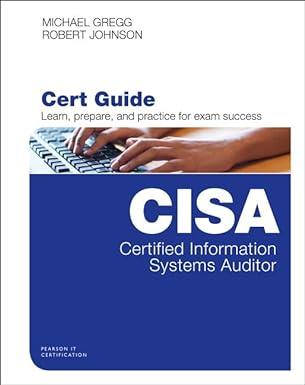Question
Question 1 Consider the following situation faced by Jim, a regular salary man. He is looking to optimize his number of visits to the bank
Question 1
Consider the following situation faced by Jim, a regular salary man. He is looking to optimize his number of visits to the bank (annually), maximizing his return and minimizing his costs. The following shows his relevant parameters.
N : Number of trips to the bank annually. = $2 : Opportunity cost of Time (in minutes) t = 20 minutes: The time taken per visit to the bank F = $5 : Fixed fees charged by the bank per visit P = $50 : Price of consumption c = $20 : Annual Consumption R = 3% : Annual interest rate
Note: For each part first attempt it generically (without values of parameters) and then plug them in. a) Find the expression for total opportunity cost of going to the bank (denoted by ) (3 points)
b) Find the expression for annual real interest rate forgone annually and real average money hold- ings (denoted by i0 and m ) (2 points)
c) Using part a) and b), set up the minimization problem and calculate the optimal number of visits to the bank (4 points)
1
d) Using part c) find the optimal average holdings and an expression for real money demand (de- noted by ) (3 points)
e) Using your answers to part e) calculate the following comparative statistics and interpret i) (2 points)
R
ii) (2 points) c
iii) (2 points)
Question 2
Consider the following model
M s = M P
Md =L(Y,r)=Y r : represents elasticity of Md w.r.t to r
a) Find the equilibrium in the money market (3 points)
b) Find the equation of LM curve, its slope, intercept (3 points)
c) Sketch the LM curve if i) ii) 0 and iii) 0 < , < (3 points)
d) Given any point above the LM curve, the point eventually transitions to the LM curve for stability. Prove in detail (4 points)
e) Determine the exogenous and endogenous variables in the model. (3 points)
e) Assuming a downward sloping IS curve, which policy is more effective, fiscal or monetary in the case of a liquidity trap? Explain in detail using graphs. (4 points)
Question 3
a) Consider the following model
M s = M P
Md =L(Y,r)=Y r Y =C+I+G C = a + bY d I = I r
G = G + k Y Yd=YT
2
T = cY a) Find equation of IS curve, its slope and intercept and sketch it on r-Y space (3 points)
b) Find equation of LM curve, its slope and intercept and sketch it on diagram in part a). (2 points)
c) Find the equilibrium level of Y (denoted by Y*) and r (denoted by r*) (4 points) d) Any point below IS cruve but above LM curve will converge to equilibrium level. Prove
in detail (5 points)
e) Use calculus to show the effect of i) k, ii) c, iii) b and iv) on the slope of the IS curve. (4 points)
f) Explain what is required for the:
monetary policy to be highly effective (2 points)
monetary policy to be least effective (2 points) Hint: Use part e) and see the effect of certain parameters on the slope and the equilibrium level.
g) Suppose there is an increase in G (denote the new level of G as G2. Show its affect on the diagram drawn in part a), showing the new equilibrium of Y (2 points).
i) Do you see any crowding out in part g)? If yes, why and how has it taken place? Ex- plain in detail and depict it graphically in diagram of part a). If no, prove in detail. (4 points)
j) Explain graphically and in words how crowding out can be zero. If consumption were to be negatively related with interest rate as well, what can you deduce about the magnitude of crowding out. Explain in words (4 points)
k) Using your answers to part i) and j), comment on the effectiveness of fiscal policy when crowding out is 0. (2 points)
Step by Step Solution
There are 3 Steps involved in it
Step: 1

Get Instant Access to Expert-Tailored Solutions
See step-by-step solutions with expert insights and AI powered tools for academic success
Step: 2

Step: 3

Ace Your Homework with AI
Get the answers you need in no time with our AI-driven, step-by-step assistance
Get Started


